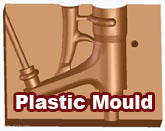> Beryllium Copper Alloys
· Beryllium Copper Strip
· Beryllium Copper Wire
· Beryllium Copper Plate
· Beryllium Copper Tube
· Casting Alloys
· Beryllium Master Alloys
· Beryllium Copper Sleeves
· Plunger tips
· EMI Finger stock
· Welding electrode/parts
· Drill String Components
· Canted Coil Springs
> Resistance Welding Alloys
> Aluminum Bronze Alloys
> Silicon Bronze Alloys
> Nickel Silver Alloys
> Phosphor Bronze Alloys
> Leaded Commercial Bronze
> Leaded Nickel Copper
> Cadmium Sheet
> Cadmium Copper
> Cadmium Tin Copper
> Cadmium Chromium Copper
> Copper Master Alloys


Tin is a chemical element with symbol Sn (from Latin: stannum) and atomic number 50. It is a post-transition metal in group 14 of the periodic table. It is obtained chiefly from the mineral cassiterite, which contains tin dioxide, SnO2. Tin shows a chemical similarity to both of its neighbors in group 14, germanium and lead, and has two main oxidation states, +2 and the slightly more stable +4. Tin is the 49th most abundant element and has, with 10 stable isotopes, the largest number of stable isotopes in the periodic table, thanks to its magic number of protons. It has two main allotropes: at room temperature, the stable allotrope is β-tin, a silvery-white, malleable metal, but at low temperatures it transforms into the less dense grey α-tin, which has the diamond cubic structure. Metallic tin is not easily oxidized in air.
The first alloy used on a large scale was bronze, made of tin and copper, from as early as 3000 BC. After 600 BC, pure metallic tin was produced. Pewter, which is an alloy of 85–90% tin with the remainder commonly consisting of copper, antimony, and lead, was used for flatware from the Bronze Age until the 20th century. In modern times, tin is used in many alloys, most notably tin/lead soft solders, which are typically 60% or more tin and in the manufacture of transparent, electrically conducting films of indium tin oxide in optoelectronic applications. Another large application for tin is corrosion-resistant tin plating of steel. Because of the low toxicity of inorganic tin, tin-plated steel is widely used for food packaging as tin cans. However, some organotin compounds (compounds formed from tin and hydrocarbons) can be almost as toxic as cyanide.
Now we are sourcing for the Tin ore (Sn: 50% min.) for the production of the alloys here in China and our purchase quantity for the Tin ore can be 300MT per month.
Welcome the SERIOUS supplier to contact with us and give us the completely Quotation to CIF Xiamen port, China by ocean sea transportation.

CHECK the ALB Copper Alloys feature on specialty copper alloys for Automotive industry.

CHECK the ALB Copper Alloys feature on specialty copper alloys for Aerospace industry.

CHECK the ALB Copper Alloys feature on specialty copper alloys for RWMA industry.

CHECK the ALB Copper Alloys feature on specialty copper alloys for Plastic Mould industry.








